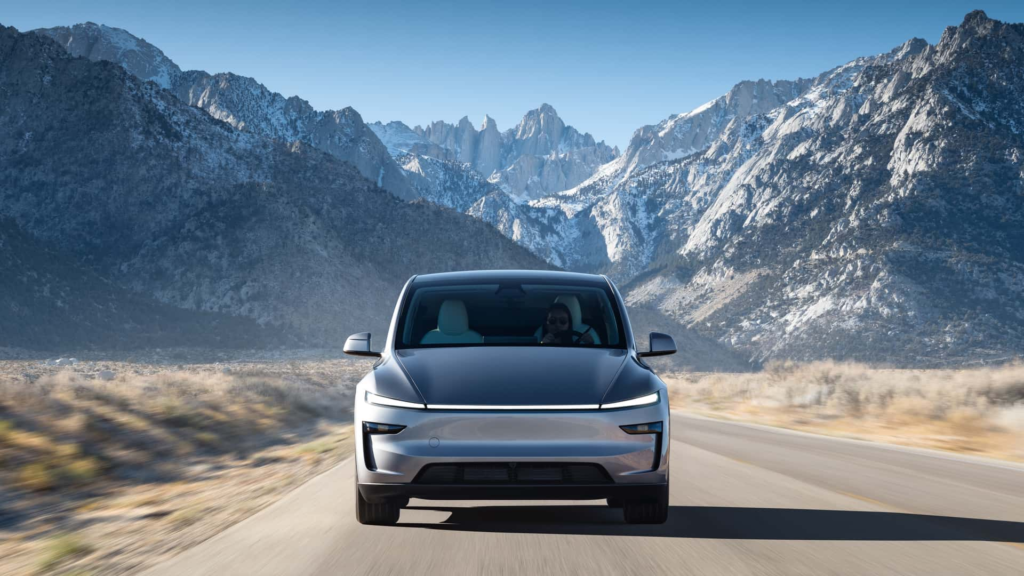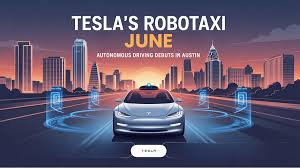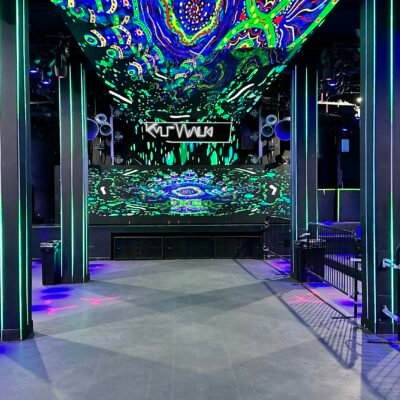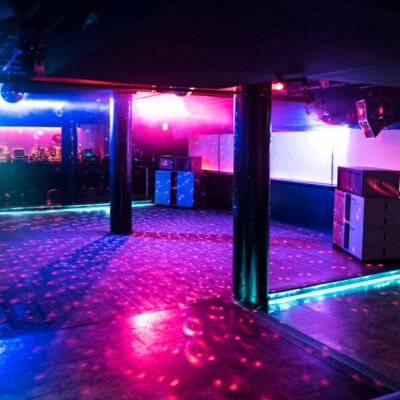In a groundbreaking move for the autonomous vehicle industry, Tesla is set to launch its highly anticipated robotaxi service in Austin, Texas, on June 12, 2025. This pilot program marks a significant milestone in Tesla’s mission to revolutionize transportation through artificial intelligence and self-driving technology. CEO Elon Musk has long championed the idea of a fully autonomous ride-hailing network, and this launch brings that vision closer to reality. However, with safety concerns, regulatory hurdles, and competition from companies like Waymo, the road ahead for Tesla’s robotaxi service is both exciting and challenging.

A Bold Step Toward Autonomy
Tesla’s robotaxi service will debut with a small fleet of 10 to 20 Model Y vehicles equipped with the company’s Full Self-Driving (FSD) Unsupervised software. Unlike the current FSD system, which requires human supervision, these vehicles will operate without a driver in the front seat, relying entirely on Tesla’s AI-driven technology. The service will initially be limited to specific, safer areas of Austin through geofencing, a strategy that restricts the vehicles’ operation to predefined zones to ensure safety. Musk has emphasized that this cautious approach prioritizes the well-being of passengers and pedestrians, with plans to scale up to thousands of vehicles if the initial rollout proves successful.
The June 12 launch date, first reported by Bloomberg, was discussed internally at Tesla, though it remains subject to change. Musk previously indicated a late-June timeline, but this more specific date signals Tesla’s confidence in meeting its ambitious goal. The company has been testing its robotaxi technology extensively, with over 1,500 trips and 15,000 miles driven in Austin and San Francisco for employees as part of its preparation. These tests have helped refine Tesla’s FSD networks, mobile app, vehicle allocation, and remote assistance operations. Bloomberg
Why Austin?
Austin, Texas, is a strategic choice for Tesla’s robotaxi debut. The city is home to Tesla’s Gigafactory and corporate headquarters, making it a hub for the company’s innovation and testing efforts. Texas also offers a regulatory environment with fewer restrictions on autonomous vehicles compared to states like California, where companies must navigate stringent permitting processes. This flexibility allows Tesla to deploy its robotaxi service with minimal pre-market approval, though it raises questions about safety and oversight. Reuters
The city’s vibrant tech scene and growing population make it an ideal testing ground for a futuristic ride-hailing service. However, Austin is not new to autonomous vehicles. Alphabet’s Waymo has been operating driverless ride-hailing services in the city, completing 250,000 paid trips weekly across multiple U.S. markets. Tesla’s entry into this competitive landscape will test its ability to differentiate itself through its unique AI-driven approach. CNBC
Tesla’s Technology: A Camera-Based Approach
Unlike competitors like Waymo, which rely on a combination of cameras, lidar, and radar, Tesla’s robotaxi service will depend solely on camera-based systems and advanced neural networks. Musk has long argued that additional sensors like lidar are costly and unnecessary, asserting that Tesla’s AI can achieve superior results through computer vision alone. “What will actually work best for the road system is artificial intelligence, digital neural nets, and cameras,” Musk said in a recent CNBC interview.

This approach has sparked both excitement and skepticism. Supporters praise Tesla’s innovative use of AI, which could enable high-volume production and lower costs compared to sensor-heavy competitors. Critics, however, point to safety concerns with Tesla’s FSD technology, particularly in challenging conditions like poor weather. The National Highway Traffic Safety Administration (NHTSA) is currently investigating Tesla’s FSD system following reports of collisions in reduced visibility, such as fog or sun glare. In May 2025, the NHTSA requested detailed information from Tesla about its robotaxi plans, focusing on how the vehicles will perform in adverse weather and whether remote operators will monitor them in real time.
Safety and Regulatory Challenges
Safety remains a top concern for Tesla’s robotaxi rollout. The company has faced scrutiny over its Autopilot and FSD systems, which have been linked to accidents, including a fatal crash in 2023. To address these concerns, Tesla is relying on remote teleoperators to monitor its robotaxi fleet and intervene in emergencies, similar to strategies used by Waymo and Amazon’s Zoox. However, Tesla’s limited transparency about its safety data and testing protocols has raised eyebrows among regulators and industry experts.
Austin city officials have expressed frustration over Tesla’s lack of communication. According to Fortune, the city’s transportation department, fire department, and emergency responders have not received critical information, such as first responder guides or details about the level of autonomy the robotaxis will have at launch. This lack of preparedness could complicate emergency responses, especially in scenarios involving crashes or vehicle malfunctions. Tesla has assured officials that more information is forthcoming, but the rushed timeline has fueled concerns about the service’s readiness.
The Competitive Landscape
Tesla’s robotaxi service enters a market already populated by established players. Waymo, a leader in the autonomous vehicle space, has been operating in Austin and other cities with a robust safety record and detailed performance reports. Amazon’s Zoox is also testing its purpose-built robotaxi in cities like San Francisco and Las Vegas, with plans to launch services soon. Meanwhile, General Motors’ Cruise recently halted its robotaxi operations after significant investments, highlighting the challenges of scaling autonomous ride-hailing.
Tesla’s advantage lies in its ability to produce vehicles at scale and its ambitious vision for a nationwide robotaxi network. Musk has predicted that millions of Teslas could operate autonomously by late 2026, with the potential to expand to cities like San Francisco and Los Angeles following the Austin pilot. The company is also developing the Cybercab, a purpose-built autonomous vehicle without a steering wheel or pedals, slated for production in 2026 at a price under $30,000. However, the current robotaxi service will rely on existing Model Y vehicles, which Musk claims can become autonomous through software updates.
Economic and Industry Impact
The success of Tesla’s robotaxi service could have far-reaching implications for the company and the broader transportation industry. With Tesla’s electric vehicle sales declining by 13% in the first quarter of 2025, the robotaxi program is a critical part of Musk’s strategy to diversify revenue streams and boost investor confidence. Analysts like Wedbush’s Dan Ives believe the robotaxi launch could unlock $1 trillion in value for Tesla, potentially driving its market valuation toward $2 trillion over the next 12 to 18 months.

For consumers, a successful robotaxi service could offer a cost-effective alternative to traditional ride-hailing platforms like Uber and Lyft. Tesla has not yet disclosed pricing details, but the ability to operate vehicles without human drivers could significantly reduce costs. Additionally, Tesla’s long-term vision includes allowing private owners to add their vehicles to the robotaxi fleet, creating a new income stream for Tesla owners.
Looking Ahead
As the June 12 launch approaches, all eyes are on Tesla to deliver a safe and reliable robotaxi service. The pilot program in Austin will serve as a critical test of Tesla’s FSD technology and its ability to compete in the autonomous vehicle market. While Musk’s ambitious timelines have historically faced delays, the company’s progress in testing and its strategic focus on AI-driven autonomy suggest that this launch could mark a turning point.
However, challenges remain. Tesla must address safety concerns, provide clearer communication with regulators and city officials, and prove that its camera-based approach can match or surpass the capabilities of sensor-equipped competitors. The outcome of this pilot will shape not only Tesla’s future but also the trajectory of autonomous driving in the United States.
For now, Austin residents and Tesla enthusiasts alike await the debut of a service that could redefine urban mobility. As Musk put it, “We’re putting our toe in the water gently at first, just to make sure everything’s cool.” Whether Tesla can dive in fully remains to be seen, but the journey toward a driverless future is officially underway.
Also Read :- Apple Faces 25% Tariff Pressure as Trump Urges Reshoring iPhone Production






